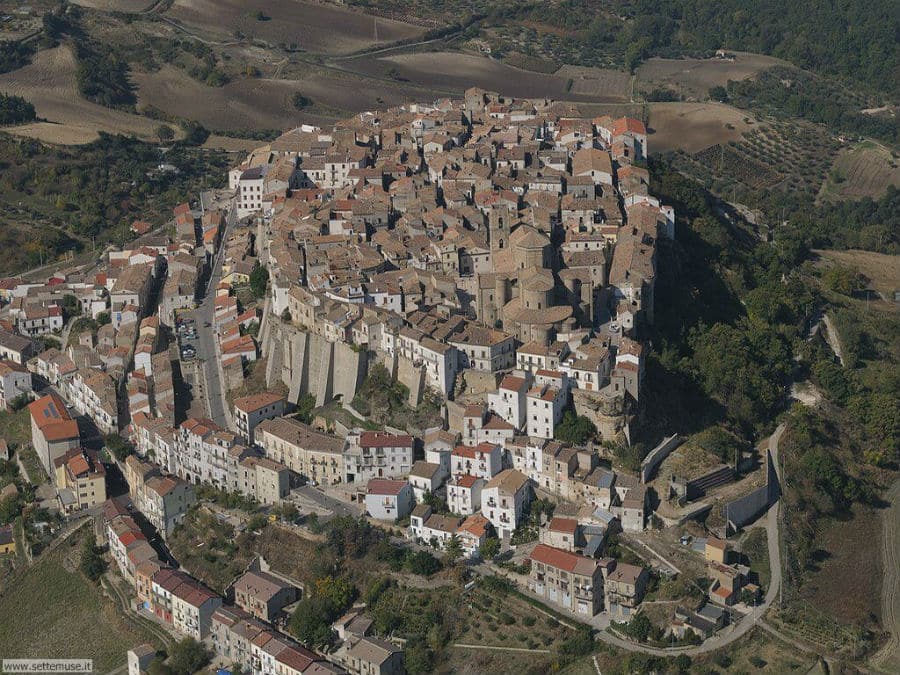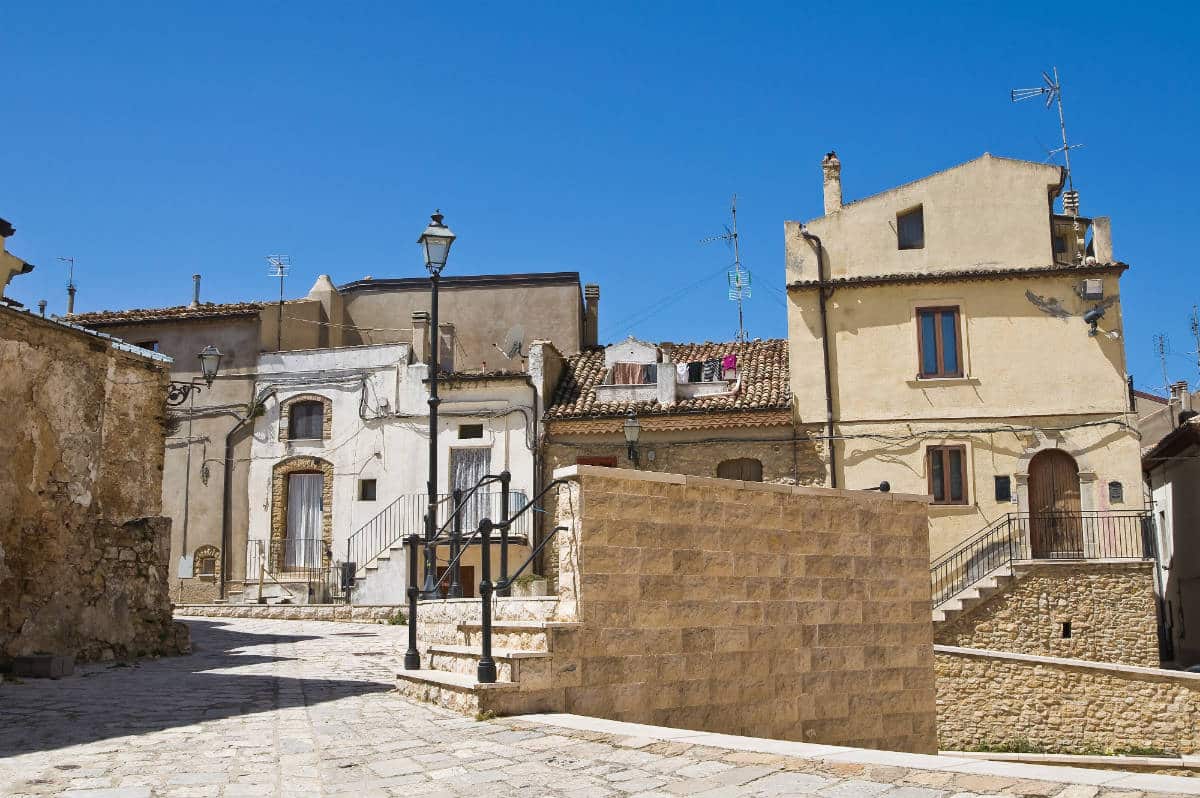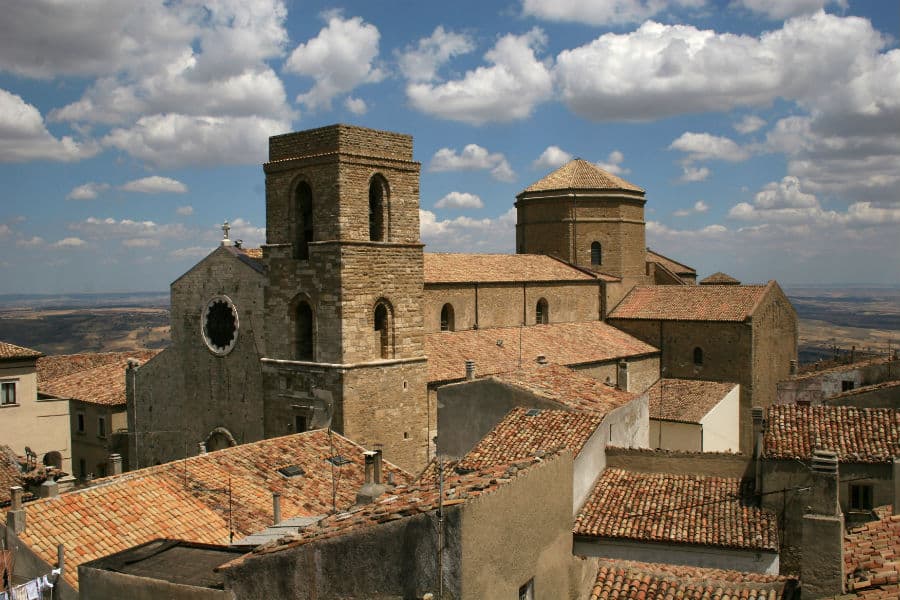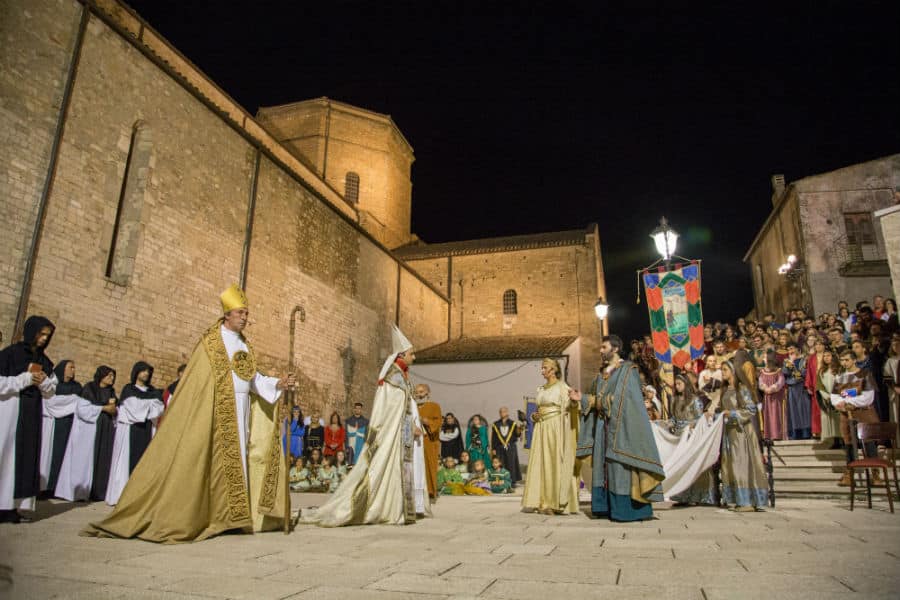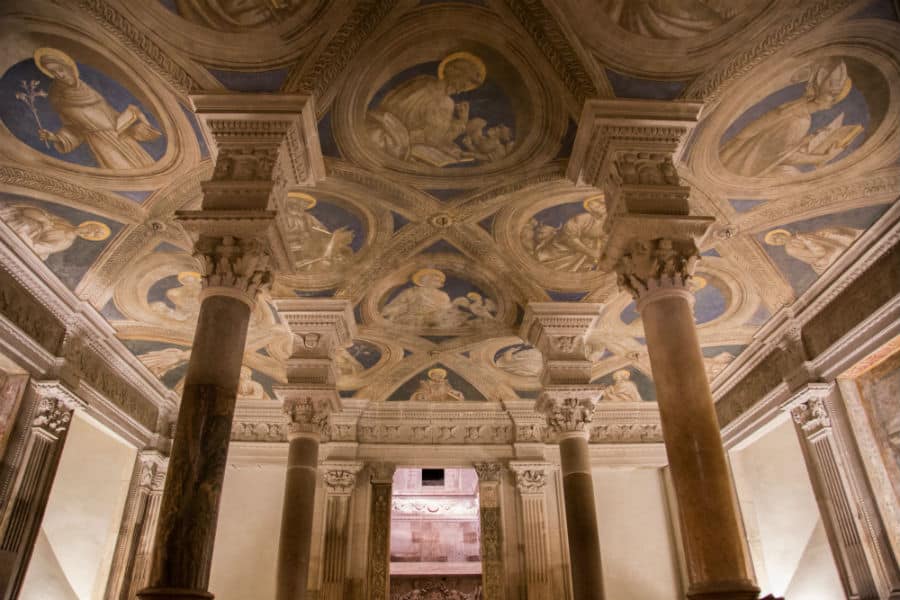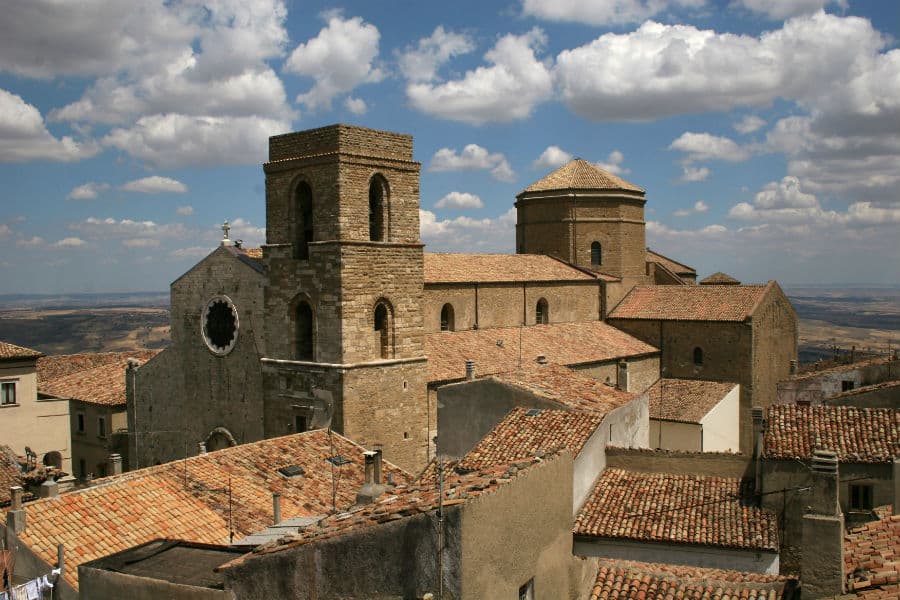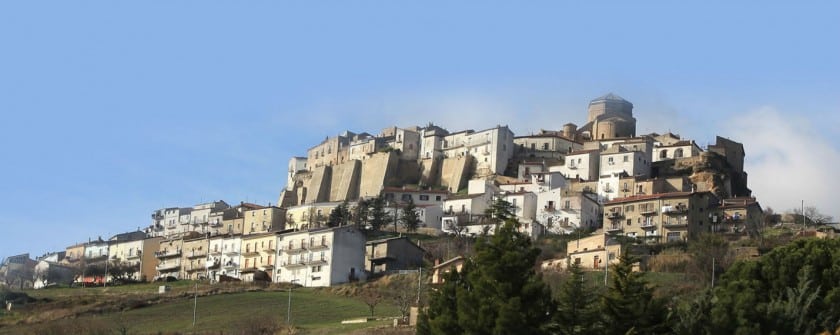Acerenza (Lagerénze in Lucanian dialect) is situated on a steep-sided plateau between the Bradano River and its tributary Fiumarella, and has always been very important strategically for the defense of the territory.
Ancient Acheruntia, located at 833 m above sea level, appears as an impregnable stronghold whose origins date back to the first tribes of the Osci. Conquered by the Romans in 318 BC, it was evangelized by St. Peter in 63 AD. Its location, considered strategically important, dominated the major arteries that connected the south to Rome: the Appian Way, the Appia-Traiana and the Via Erculea. After conquest by the Lombards, it became in 605 the capital of one of Lucania's three castaldates, and in the 11th century the Normans strengthened the castle, fortified the city, built the Cathedral and named the region Basilicata in honor of this great Christian Basilica. Every year, on August 11 and 12, this important event is celebrated in a historical re-enactment that transforms the village into an open-air theater. In 1216 the Templars left traces of their passage in Acerenza. From the 13th to the 15th century it underwent Swabian, Angevin and Aragonese domination with the feudal families of Sanseverino, Durazzo, Ruffo, Ferrillo and Orsini di Gravina. In 1593 King Philip II of Spain established the Duchy of Acerenza with the Pinelli and later the Pignatelli of Belmonte.
Its historic center has retained the characteristics of a medieval village with urban planning in a radial pattern around the Longobard Castle (now home to the Museum of Sacred Art) and the Cathedral, consecrated in 1080 to St. Mary of the Assumption and St. Canio, the city's patron saint. Built on an earlier early Christian church that, in turn, stood on a pagan temple dedicated to Hercules Acheruntinus, the Cathedral is in the Romanesque-Cluniac style, in the style of the French abbey of Cluny. Inside you can admire important paintings by Antonio Stabile and the 16th-century Renaissance crypt.
Acerenza is home to Saint Laviero Martyr, a young man who was born in Acerenza in vico Tergia and died a martyr's death in Grumento on November 17, 312. His annual feast on November 17 is preceded by a Triduum of Prayers in the church named after him.


